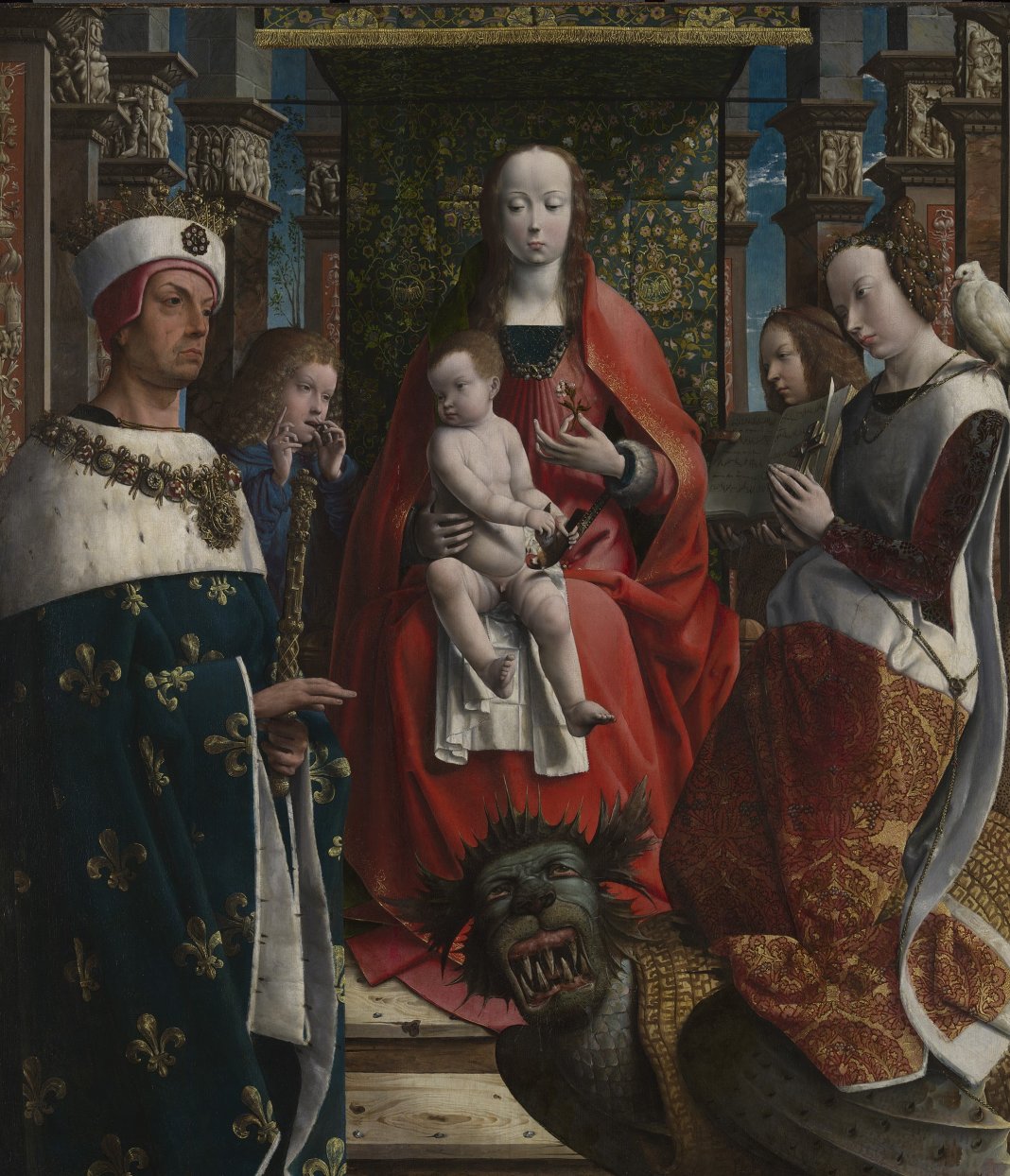An extraordinary and enigmatic Northern Renaissance altarpiece, unseen by the public for over six decades, has been acquired by the National Gallery in a landmark £16.4 million purchase as part of the institution’s bicentenary celebrations.
Dating from around 1510, “The Virgin and Child with Saints Louis and Margaret” represents a remarkable addition to the Gallery’s collection, despite—or perhaps because of—its mysterious provenance. Art historians remain uncertain whether its creator was Netherlandish or French, making the piece a fascinating puzzle for scholars and visitors alike.
The altarpiece was acquired through a private treaty sale brokered by Sotheby’s, with crucial support from the American Friends of the National Gallery. It will make its public debut on May 10 as part of the Gallery’s ambitious bicentenary rehang, “C C Land: The Wonder of Art,” which coincides with the reopening of the transformed Sainsbury Wing.
A Masterwork of Unknown Origin
The painting’s origin story begins with its first documented location in 1602 at the urban priory of Drongen (Tronchiennes) in Ghent, Belgium. Whether this was its original home remains unknown, though the selection of saints would have been appropriate for the Premonstratensian Abbey, which had special reverence for Saint Louis.
Emma Capron, Curator of Early Netherlandish and German Paintings at the National Gallery, described the acquisition as “a rare and exciting addition to the National Gallery’s superb collection of Early Netherlandish paintings.”
“This altarpiece is the work of a talented and highly original artist but unknown, and I hope that ongoing research and the painting’s public display will help solve this conundrum in the future,” Capron added.
A Canvas of Contradictions and Curiosities
The altarpiece presents a visually stunning tableau that combines sacred reverence with unexpected whimsy. At its center, the Virgin and Child are enthroned in an open-air chapel, flanked by two musical angels and the saints Louis and Margaret.
Saint Louis, the holy king of France, appears in regal blue robes embroidered with the fleur-de-lis and wears the collar of the French royal Order of Saint Michael. His individualized features suggest he may be a portrait of a contemporary figure.
Saint Margaret, sumptuously attired, emerges triumphantly from the broken shell of a dragon that had swallowed her—depicted with remarkable detail right down to its slobbering jaws.
The painting brims with unusual and sometimes humorous details. One angel plays a mouth harp—an instrument rarely associated with heavenly music—while another holds a songbook inscribed with the Marian hymn “Ave Regina Caelorum,” though the musical notation is purely fantastical.
Perhaps most surprising are the capitals of the columns, which feature biblical scenes alongside unexpectedly bawdy imagery, including a naughty child exposing his behind to viewers.
Scholarly Debate and Artistic Influences
Art historians continue to debate the painting’s origins. Its sense of monumentality and strong shadows recall French masters like Jean Hey (Master of Moulins), while its composition and execution—alternating smooth areas with minute details—pay homage to Netherlandish traditions established by Jan van Eyck and Hugo van der Goes.
The dramatically foreshortened faces of the saints and angels bear resemblance to the early work of Jan Gossaert, whose “Adoration of the Kings” is already part of the National Gallery’s collection. Physical evidence adds to the mystery: the Baltic oak panel would typically suggest Netherlandish origin, as French artists generally used locally sourced wood.
Dendrochronology (tree-ring dating) indicates the painting was executed after 1483, while the design of the Order of Saint Michael chain worn by Saint Louis suggests it predates modifications made by Francis I in 1516. Stylistic assessment places its creation around 1510.
A Bicentenary Cornerstone
This remarkable altarpiece joins other recent significant acquisitions as part of the National Gallery’s 200th anniversary celebrations, including Lawrence Alma-Tadema’s “After the Audience,” Nicolas Poussin’s “Eucharist,” and Eva Gonzalès’ “The Full-length Mirror.”
Its public unveiling on May 10 marks a significant moment in the painting’s history, bringing it back into the light after decades of seclusion in a private collection, where it had been exempted from Capital Taxes with limited public access.
As visitors encounter this extraordinary work with all its eccentricities and mysteries, they’ll experience a masterpiece that challenges conventional art historical narratives—proving that extraordinary quality can sometimes emerge from anonymity, especially in late medieval and Renaissance periods.
The acquisition fulfills a core mission of the National Gallery as it enters its third century: bringing people and paintings together, even when—perhaps especially when—those paintings still hold secrets waiting to be discovered.
A Little Bit of London In Your Inbox Weekly. Sign-up for our free weekly London newsletter. Sent every Friday with the latest news from London!



